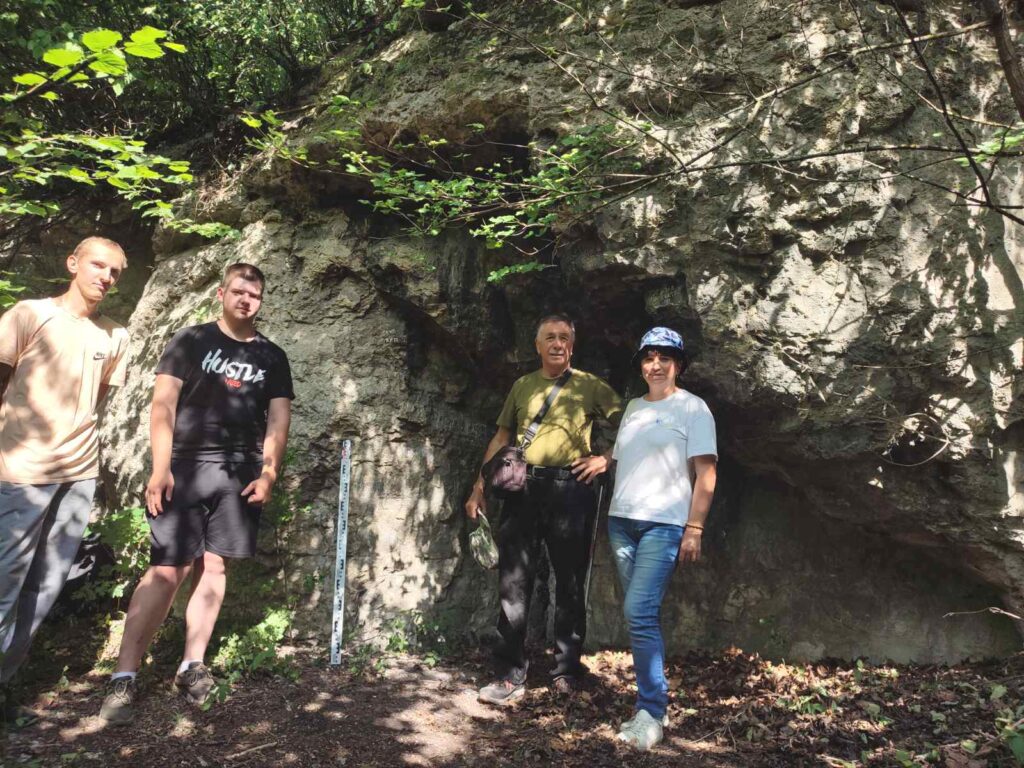The sacred antiquity of the village of Daleshove, now Chernelytsya settlement community of Kolomyia district, Ivano-Frankivsk region, dates back to ancient times. A cave monastery and the famous miraculous icon of the Most Holy Theotokos, known in Ukraine and abroad, represent the Christian heritage. The story about it was first presented in a small brochure “About the miraculous icon of the Most Holy Theotokos in Daleshove, with songs and prayers and an akathist to the Most Holy Theotokos”, which was published in Kolomyia in 1876 by the publishing house of M. Bilous. The unknown author of the publication first provided information about the circumstances of the appearance of the miraculous icon, which was placed in the Daleshove church, built in 1778, and in 1867 rebuilt and expanded in the form of a cross, decorated with five domes. The image of the Blessed Virgin Mary was placed above the large throne in a niche of the eastern wall.
Field survey of sacred antiquities in the Monastyrok tract between the villages of Daleshove and Dubky was carried out by participants of the Carpathian Archaeological Expedition of the Institute of History, Ethnology and Archaeology of the Carpathians and the Department of Ethnology and Archaeology of the Vasyl Stefanyk Precarpathian (Carpathian) National University in 2011 and 2025.
The Monastyrok tract appears in the form of an elongated hill, which on the western side ends with a cliff, turning into a vertical outcrop of a rock wall up to 5 m high and more than 20 m wide. The entrance to the Monk’s Grotto is from the northwest. Along the rock wall, there is a passage up to three meters wide, then a steep cliff. In the left part of the rock wall, sooty from the fire, lower and upper cuts and undercuts for the wall-mounted building – the residential part of the Monk’s Grotto – were discovered. Not far from it, in the rock wall, there is another grotto 2.3 m high and three meters wide, which apparently served as the altar part of the monastery. Here, a leveled and in a number of places polished rock plane was discovered. On one of the upper polished marble concretions, a rock image in the form of an icon was discovered, with crosses of various configurations at the corners, in the center of which the contours of the Most Holy Theotokos with the baby Jesus, enveloped in a halo from above, can be traced. Nearby is an image of a cross in a circle. The height of the icon reaches 30 cm; width 25 cm. Above the image, under a rounded rock ledge, an inscription in Church Slavonic “PRESTAѦ” is visible. To the left and right of the icon, vague faces and figures of people are visible. It is obvious that the original miraculous icon was graphically depicted on the rock and was an object of worship since the Middle Ages.
Nearby, below, on a flat rock surface, outlined by oblong vertical and horizontal rock incisions, a graphic image in the form of a rounded face with a beard is carved. Around the head is a halo, and on the left cheek is a cross in a circle. A large cross is carved above the head. On the left, another face with closed eyes is visible. The rock panel is square – 30 cm wide and 30 cm high.
Nearby, another image was discovered, resembling three rock churnings, which were carved from stone in the form of animals endowed with mysterious miraculous power and could serve as a tribal totem. In this case, the first, lower, rock carving resembles a bull, the second a wild boar. The width of the relief reaches 15 cm, the height 10 cm. The two above-mentioned images have come down to us since pre-Christian times.
The rock carvings in the Monk’s Cave near Daleshove encourage a thorough archaeological examination of local antiquities, which has not yet been carried out here. The Kuzkovytske tract, located not far from the Monastyrok tract, in which, according to folk legends, there was a monastery with the church of Saints Cosmas and Demyan, also deserves special attention. The history of the ancient monastery, apparently dating back to the 13th–14th centuries, in which the miraculous icon of the Most Holy Theotokos became famous with the discovery and publication of written sources about one of the most outstanding monuments of the spiritual heritage of Pokuttya, requires to be detailed archeographic and historiographic study.

